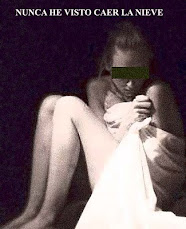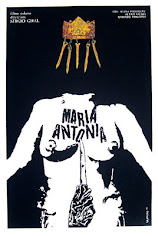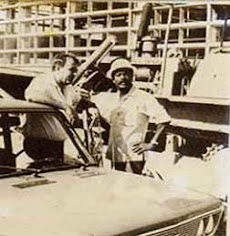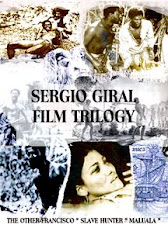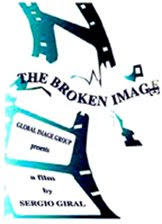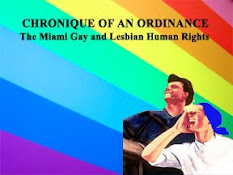 Investigation of a Citizen Above Suspicion
Investigation of a Citizen Above Suspicion
Gino Moliterno November 19, 2012 Cinémathèque Annotations on Film, Issue 65

Elio Petri’s death in 1982 at the age of only 53 robbed Italy, and the world, of one of the most eclectic and audacious directors to have emerged in the crowded jostle that was the golden age of Italian postwar cinema. In no way one of its most prolific practitioners – indeed, he had only a dozen features to his credit, although his early death no doubt contributed to such a limited output – he was nevertheless a courageous director who dared take risks and experiment with both stylistic accentuation and the familiar formulas of popular genres, a lesson that he no doubt learnt from his filmmaking mentor and friend, Giuseppe De Santis. So, after a period of apprenticeship scripting a number of films for De Santis and others, he was given a chance by that most enterprising of Italian producers, Franco Cristaldi, to direct his first film, L’assassino (The Assassin, 1961), an original and intriguing murder mystery for which he managed to enlist Marcello Mastroianni, then fresh from the stellar success of La dolce vita (Federico Fellini, 1960). After in part falling prey to, but also successfully exorcising, the influence of Michelangelo Antonioni in his portrayal of an existential mid-life crisis in I giorni contati (Numbered Days, 1962), there was a brazen descent into the pop art kitsch and faux sci-fi of La decima vittima (The Tenth Victim, 1965), a loose adaptation of a Robert Sheckley story which had a peroxide blonde Mastroianni, no less, being chased through the streets of a vaguely futuristic city of Rome by Ursula Andress. Two years later, with A ciascuno il suo (We Still Kill the Old Way, 1967), the first of his adaptations of Leonardo Sciascia novels (and his first collaboration with actor Gian Maria Volonté and screenwriter Ugo Pirro), he effectively forged the form of what would then become the Italian Mafia film before going on to manipulate a tried and true horror formula to explore a frustrated artistic sensibility descending into madness in the ironically-titled Un tranquillo posto di campagna (A Quiet Place in the Country, 1969). Un indagine di un cittadino al di sopra di ogni sospetto (Investigation of a Citizen Above Suspicion, 1970) would, however, represent a raising of the cinematic stakes.

Screenwriter Pirro recalled that when he and Petri first privately screened their final cut of Investigation for fellow filmmakers Cesare Zavattini, Mario Monicelli and Ettore Scola, their colleagues were enthusiastic about the film but their immediate comment was: “You’re going to end up in prison” (1). Because it was December 1969, and with a government perennially in crisis and unable to respond cogently to the increasingly-violent student/worker uprisings of the previous two years, Italy had begun its dangerous spiral down into the delirium of what would be its darkest period since World War II, a decade of social and political conflict that, appropriately enough, would come to be known as “the years of lead”. Indeed, only weeks after Petri had finished shooting the film, the first of what would become many bombs in public places had already exploded in Milan’s Piazza Fontana, killing 17 people and injuring 88. A few days later Giuseppe Pinelli, an anarchist accused of complicity in the bombing (and later posthumously exonerated), had – “accidentally”, the authorities continued to hold – fallen to his death from a fourth storey window while being questioned by the police.
Although an active and card-carrying Communist in his youth, Petri had abandoned the party and political militancy after the Soviet invasion of Hungary in 1956. However, the “events” of 1968, brought politics, for him, as for many others, decidedly back to centre stage. Consequently, in spite of the film’s patent disclaimer of any intended reference to real persons or events, its truculent portrayal of a fascistic police commissioner who becomes head of the political bureau and then cold-bloodedly kills his mistress and leaves obvious clues in an attempt to test the impunity granted to him by his position in the system, could not but be read politically and function as something of a slap in the face to the forces of law and order. Many militants on the extra-parliamentary left would, in fact, go further and see the unnamed protagonist of the film as a transparent portrait of Luigi Calabresi, the police commissioner who had presided over Pinelli’s fatal interrogation and who would himself be assassinated two years later (2).
Given the circumstances, then, and the vehemence of the film’s portrayal, the misgivings of Petri’s colleagues about the film would have seemed well-founded. Inexplicably, however, or perhaps explicable only by just how convoluted the Italian political situation had become by this time, the film was not only not censored but freely granted a theatrical release (3). Predictably, however, its premiere in Milan was attended by all the higher echelons of the police who immediately denounced it as an insult to the forces of law and order and presented an official appeal to have it withdrawn. Inexplicably again – or again explicable only by reference to how fearful the authorities had become of provoking an even greater backlash on the streets – the relevant magistrate, who was also presiding over the investigation into the death of Pinelli at the time, dismissed the appeal and the film was allowed to circulate freely.
Whatever the accuracy of its exaggerated and grotesque representation of political realities, the film clearly well reflected a widespread mistrust of constituted authority in Italy at the time and proved hugely popular at the box office. When it opened at Rome’s Ariston cinema it drew such massive crowds that traffic was blocked in the surrounding streets and the cinema forced to institute matinee and late night sessions in order to meet the extraordinary demand. Critically, it proved to be the most successful film of Petri’s short career, winning two Davids at home (Best Film and Best Actor) and both the Grand Jury Prize and the FIPRESCI Prize at Cannes. A year later it also scored the Academy Award for Best Foreign Language Film, although Petri always claimed to be more gratified by that year’s Mystery Writers of America’s Edgar Allan Poe Award for Best Foreign Film than by the Hollywood accolade.
The one critique that continued to be frequently levelled at the film was that its pronounced stylistic expressionism often descended into mere caricature. Petri himself tended to dismiss the accusation as intellectual elitism, saying: “The snobbish, intellectual cinema requires ‘understatement’. But, unfortunately, reality is caricature and I believe that cinema should stress this, even if it means resorting to very popular forms; it should not fear sliding into kitsch.” (4)
Undoubtedly buoyed by the film’s overwhelming success, Petri then went on to make two other films in what came to be called his “trilogy of neurosis”. If Investigation had been an exploration of the neurosis of power, La classe operaia va in paradiso (The Working Class Goes to Heaven, 1971) was meant to explore the neurosis of work, while La proprietà non é più un furto (Property is No Longer a Theft, 1973) caustically satirised the desire for property and money as pathological. Neither, however, received anything like the acclaim garnered by Investigation. The Working Class Goes to Heaven, in particular, proved divisive, being awarded the Palme d’Or at Cannes while also being furiously attacked, perhaps most emblematically by Marxist filmmaker Jean-Marie Straub, who in a public meeting in Paris attended by Petri himself took the microphone to declare that every copy of such a film deserved to be burned (5).
Disappointed but undaunted, Petri pushed his expressionistic experimentations to a new level with Todo modo (1976). Ostensibly the adaptation of a murder mystery by Leonardo Sciascia, the film dared to imagine a spiritual retreat attended by all the leading exponents of the ruling Christian Democratic Party (all clearly identifiable), turning into an almost satanic ritual during which all their collusions and corruption are brought to light and they are murdered, one by one. Volontè’s grotesque yet uncannily convincing incarnation of party leader, Aldo Moro, as the ultimate puppet-master, himself executed at the end of the film, was one of its most extraordinary achievements. But it ultimately rebounded to the film’s discredit when Moro’s actual kidnapping and subsequent cold-blooded execution by the Red Brigades two years later exploded as a national trauma and Petri’s film, which appeared to have wished Moro’s death, came to be seen as something of a malignant prophecy.
Feeling ever more marginalised, Petri struggled to make what would be his final film, Buone notizie (Good News, 1979), another grotesque social satire directed at Italian television. It passed almost without notice. His most enduring legacy thus remained Investigation of a Citizen Above Suspicion.
Endnotes
1.Quoted in Franca Faldini and Goffredo Fofi, Il cinema italiano d’oggi 1970-1984 raccontato dai suoi protagonisti, Mondadori, Milan, 1984, p. 59. My translation.
2.Petri always denied any implied reference in Investigation to the Pinelli case. Rather significantly, however, only a year later he had teamed up with writer-director Nelo Risi in making a full-length documentary on the Pinelli case. Ironically the documentary featured Gian Maria Volonté himself, after having so convincingly incarnated the maniacal police commissioner who beats up student demonstrators and declares that “Repression is civilisation” in the earlier film. He calmly provides on-camera comment and patiently takes the viewer through the detailed re-enactment before the camera of a number of the various (and varying) police accounts of Pinelli’s death to test their credibility.
3.In an interview published in 1979 Pirro maintained that the film’s release had been facilitated by the national leadership of the Socialist Party, who approved of what they judged to be its leftist leanings and thus thought they could not afford to not support it. See Mino Monicelli, Cinema italiano, ma cos’è questa crisi?Laterza, Rome, 1979, p. 121.
4.Petri quoted in Art, Politics, Cinema: The Cineaste Interviews, ed. Dan Georgakas and Lenny Rubenstein, Pluto Press, London and Sydney, 1985, p. 58. His emphasis.
5.The episode is recounted in detail, and as personally witnessed, by Alfredo Rossi in his book Elio Petri Indagine su un cittadino al di sopra di ogni sospetto/Investigation of a Citizen Above Suspicion (1970 Italy 112 mins)
Prod Co: Vera Films S.p.a. Prod: Marina Cicogna, Daniele Senatore Dir: Elio Petri Scr: Elio Petri, Ugo Pirro Phot: Luigi Kuveiller Ed: Ruggero Matroianni Prod Des: Romano Cardarelli Mus: Ennio Morricone
Cast: Gian Maria Volonté, Florinda Bolkan, Gianni Santuccio, Orazio Orlando, Sergio Tramonti, Arturo Dominici, Elio Petri








